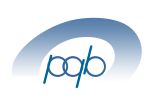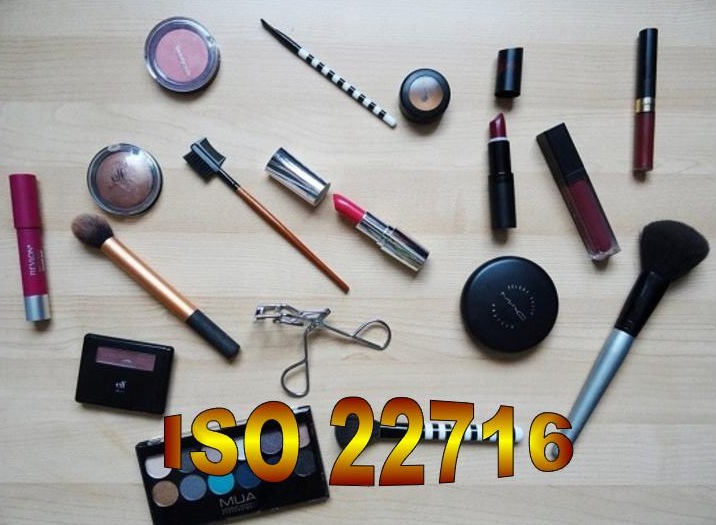T 83v07 - E-Learning - ISO 22716 training package - Readiness and internal audit of your cosmetic Good Manufacturing Practices GMP version 2007
E-Learning (online courses) - Implementation, maintenance, improvement and internal audit of your cosmetic GMP Good Manufacturing Practices ISO 22716 version 2007. You save 75 euros on the second course and 64 euros on provided documents!
Description
T 23V07 ONLINE COURSE FOR YOUR COSMETICS GMP QUALITY MANAGEMENT SYSTEM ISO 22716 VERSION 2007
Discover the ISO 22716 standard and
- its contents
- its principles
- its requirements
- its stakes
Get used to
- Good Manufacturing Practices for cosmetic products
- Cosmetic Regulation
- process approach
- cosmetic terminology
- ISO 22716 readiness documentation
- ISO 22716 internal audit documentation
- applicable regulatory requirements
- risk management
- the specificities of cosmetic products
The important and fundamental elements of a medical device quality management system
- quality approach (quality management principles, PDCA cycle)
- standards
- process approach (definitions, process types, mapping)
- personnel hygiene
- premises and requirements
- equipment
- raw materials
- production
- finished products
- laboratory
- nonconforming products
- subcontracting
- internal audit
- documentation
- placing on the market
The menu of the course
- Presentation
- MCT (multiple-choice test) Beginning (10 questions)
- 1 Good Manufacturing Practices (GMP)
- 1.1 History
- 1.2 Benefits
- 1.3 Application
- 1.4 Standards, definitions, books
- 1.5 Principles and steps
- MCT GMP (7 questions)
- 2 Process approach
- 2.1 Processes
- 2.2 Mapping
- 2.3 Approach
- MCT Process approach (6 questions)
- 3 Personnel
- 3.1 Principle
- 3.2 Organization
- 3.3 responsibilities
- 3.4 Training
- 3.5 Hygiene
- 3.6 Visitors
- Case Clean room
- Summary of clause 3
- MCT Personnel (6 questions)
- 4 Premises
- 4.1 Principle
- 4.2 Areas
- 4.3 Space
- 4.4 Flow
- 4.5 Floors
- 4.6 Toilet facilities
- 4.7 Lighting
- 4.8 ventilation
- 4.9 Pipework
- 4.10 Cleaning
- 4.11 Maintenance
- 4.12 Consumables
- 4.13 Pest control
- Summary of clause 4
- MCT Premises (6 questions)
- 5 Equipment
- 5.1 Principle
- 5.2 Design
- 5.3 Installation
- 5.4 Calibration
- 5.5 Cleaning
- 5.6 Maintenance
- 5.7 Consumables
- 5.8 Authorizations
- 5.9 back-up
- Summary of clause 5
- MCT Equipment (6 questions)
- 6 Raw materials
- 6.1 Principle
- 6.2 Purchasing
- 6.3 Receipt
- 6.4 Identification
- 6.5 release
- 6.6 Storage
- 6.7 Re-evaluation
- 6.8 Water
- Case Selecting suppliers
- Summary of clause 6
- MCT Materials (6 questions)
- 7 Production
- 7.1 Principle
- 7.2 Manufacturing
- 7.3 Packaging
- Case Task priority
- Case Process stability
- Case New line
- Case Change
- Summary of clause 7
- MCT Production (6 questions)
- 8 Finished products
- 8.1 Principle
- 8.2 release
- 8.3 Storage
- 8.4 Shipment
- 8.5 Returns
- Summary of clause 8
- MCT Finished products (6 questions)
- 9 Laboratory
- 9.1 Principle
- 9.2 Test
- 9.3 Criteria
- 9.4 Results
- 9.5 Out-of-specification
- 9.6 Reagents
- 9.7 Sampling
- 9.8 Retain sample
- Summary of clause 9
- MCT Laboratory (6 questions)
- 10 Nonconforming products
- 10.1 Rejected products
- 10.2 Reprocessed products
- Case Communication
- Case Nonconformities
- Case Kaizen & problem
- Summary of clause 10
- 11 Wastes
- 11.1 Principle
- 11.2 Types of waste
- 11.3 Flow
- 11.4 Containers
- 11.5 Disposal
- Case Customer and need
- Summary of clause 11
- MCT Nonconformities (6 questions)
- 12 Subcontracting
- 12.1 Principle
- 12.2 types
- 12.3 Contract giver
- 12.4 Contract acceptor
- 12.5 Contract
- Summary of clause 12
- MCT Subcontracting (6 questions)
- 13 Deviations
- Summary of clause 13
- 14 Complaints and recalls
- 14.1 Principle
- 14.2 Complaints
- 14.3 Recalls
- Summary of clause 14
- 15 Change controls
- Summary of clause 15
- 16 Internal audit
- 16.1 Principle
- 16.2 Approach
- 16.3 Follow-up
- Case Audit readiness
- Case Audit program
- Case Auditor question
- Case Audit report
- Summary of clause 16
- MCT Audit (6 questions)
- 17 Documentation
- 17.1 Principle
- 17.2 Types
- 17.3 Writing
- 17.4 revision
- 17.5 Archiving
- Summary of clause 17
- MCT Documentation (6 questions)
- 18 Placing on the market
- 18.1 Cosmetic Regulation
- 18.2 Before placing on the market
- 18.3 After placing on the market
- MCT End (20 questions)
t 43V07 ONLINE COURSE INTERNAL AUDIT OF YOUR COSMETIC GOOD MANUFACTURING PRACTICES ISO 22716 VERSION 2007
Discover the internal audit in an ISO 22716 certified company and
- locate the audit in the quality approach
- identify the stakes
- understand the requirements
- control the tools
Get used to
- best practices
- good behavior
- the terminology
- the questionnaire
- the report
The important and fundamental elements of an internal audit
- scope
- normative references
- principles
- audit program (responsibilities, records)
- audit conducting (objectives, evidence, conclusions)
- auditor competence (knowledge, training)
The menu of the course
Presentation
MCT (multiple-choice test) Beginning (10 questions)
1 Scope
2 Normative references
3 Definitions
4 Principles
4.1 Management principles
4.2 Audit principles
4.3 GMP performance
MCT Internal audit (7 questions)
5 Audit program
5.1 General
5.2 Objectives
5.3 Establishing
5.4 Risks
5.5 Implementing
5.6 Monitoring
5.7 Reviewing and improving
Case Audit program
MCT Audit program (11 questions)
6 Audit preparation
6.1 General
6.2 Initiating
6.2.1 First contact
6.2.2 Situations and feasibility
6.3 Preparing the audit
6.3.1 Document review
6.3.2 Audit plan
Case Audit readiness
MCT Audit preparation (8 questions)
6.4 Audit realization
6.4.1 Opening meeting
6.4.2 Audit evidences
6.4.3 Audit conclusions
6.5 Audit report
6.6 Completing the audit
6.7 Audit follow-up
Case Management review
Case Audit report
MCT Conduct an audit (8 questions)
7 Competence and evaluation of auditors
7.1 General
7.2 Auditor competence
7.3 Evaluation criteria
7.4 Evaluation methods
7.5 Auditor evaluation
7.6 Improving the competence
Case Auditor question
MCT Auditor competences (7 questions)
MCT End (20 questions)




